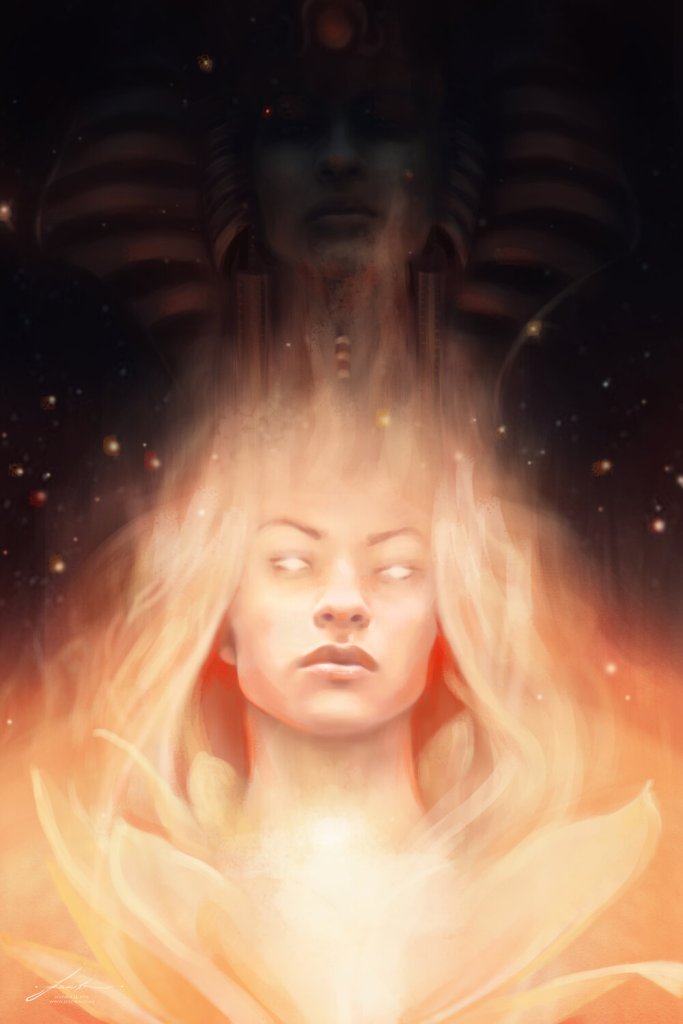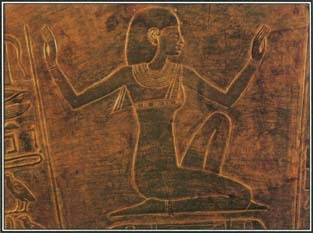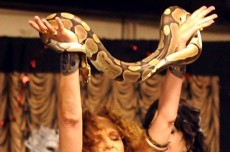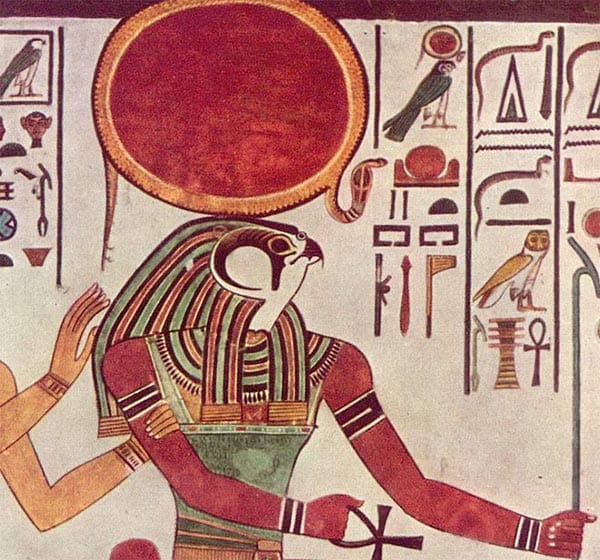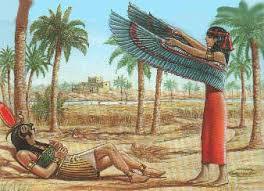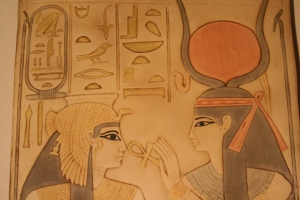Did you know that the famous tale of the Sorcerer’s Apprentice is an Isis story?
Yep. And She is in Her guise as Great Magician—and a teacher of magicians.
The version you may be familiar with is Disney’s retelling of the tale with Mickey as the apprentice from the animated movie Fantasia. Before that, it was popularized by Johann Wolfgang von Goethe in a 14-stanza poem called Der Zauberlehrling.
But that’s not where it originates. The oldest-known version of this tale is from a 2nd-century CE book by Lucian of Samosatos, a Hellenized Syrian known for his satires, rhetoric, pamphlets—and his snarky style. His snark is on full display in his book of dialogs called Philopseudes, or “Lover of Lies,” in which we find the tale of the Sorcerer’s Apprentice.
The book begins with the character Tychiades asking why people are so fond of “lies.” (Tychiades means “son of Tyche;” Tyche is the Goddess of Fate and Fortune and She was assimilated with Isis in this time period; there is even an Isityche.) The lies to which he refers are the “superstitious” remedies people are suggesting for a mutual friend, Eukrates, who has fallen ill. This situation serves as a framing story for ten tales of magic and the miraculous that the gathered friends, many philosophers, tell in order to convince Tychiades that the supernatural is not a lie.
Lucian seems to have favored the tale of the Sorcerer’s Apprentice as he gave it the most space of any of the included ten tales, and he placed it last to serve as the climax of the entire book. This story Tychiades hears from Eukrates himself.
Eukrates explains that the events he is about to relate are his very own experiences and that when Tychiades hears him out, he will be persuaded of the truth of the tale.
Eukrates story takes place in Egypt, as many ancient tales of magic did. As a young man, Eukrates has been sent on the Grand Tour throughout the Mediterranean world by his father to further his education. He is traveling up the Nile on his way to Koptos, and from there he intends to travel to the Colossoi of Memnon. Ahh, but he never makes it there.
For during his Nile travels, he meets a learned Egyptian scribe. I’ll quote the book now, because this is the part where we find Isis.
“We happened to be accompanied on the voyage up the Nile by a man of Memphis, one of the sacred scribes. His wisdom was marvelous and he had had the full Egyptian training. It was said that he had lived underground for twenty-three years in crypts while being trained in magic by Isis.”
“You’re speaking of Pankrates,” said Arignotus, “He was my teacher: a holy man, always shaven, thoughtful, speaking his Greek with a heavy accent, long and thin, snub-nosed, with protruding lips and rather skinny legs.”
“Yes, that’s Pankrates!” he said. “At first I didn’t know who he was, but when I saw him performing all sorts of miracles every time we put to, most notably riding on crocodiles and swimming with the animals, whilst they fawned upon him and wagged their tails, I realized that he was a holy man, and by being nice to him I became a friend and comrade by gradual and imperceptible stages. As a result, he shared all his secrets with me. Eventually he persuaded me to leave all my servants behind in Memphis, and to accompany him, the two of us on our own. For, he explained, we would not want for attendants. This is how we lived thenceforth.”
And so we learn that the great holy man, Pankrates, was a fully trained Egyptian scribe magician—and trained by our Lady of Magic Herself. Thus, he is capable of all the classic Egyptian magician feats, from riding crocodiles to taming wild beasts. He could probably understand the language of animals, too.
As it turned out, it was quite true that Pankrates and Eukrates did not need any servants. For anytime a task needed doing, Pankrates would take a broom or pestle, bring it to life, and it would do the task perfectly. Interestingly, Eukrates notes that the transformed broom “would look human to everyone else;” something Disney left out because living brooms were way more fun to animate, no doubt.
Of course, the power to create magical servants (ushabtis?) was the power Eukrates most craved and it was the one thing Pankrates withheld. But one night, Eukrates eavesdropped on his master and overheard the first part of the incantation—the part that could turn a broom into a person. But he never learned the second part: how to turn the servant back into a broom.
You know the rest of the story. Water, water, everywhere.
In the end, the holy man returns, restores order, then promptly disappears—giving the hapless Eukrates no further information or instruction.
At the conclusion of his tale, one of Eukrates’ friends asks whether he can still conjure magical servants. Oh yes, indeed, Eukrates answers. But he still doesn’t have the off-button and so he’d wreck his home if he actually did the magic.
In an article I’m reading about this, the author compares the story of the Sorcerer’s Apprentice with a number of other magical tales. Some are Greek, some Egyptian. All share an Egyptian setting, an ambitious young man, a search for magical knowledge, a venerable magician-priest, and often a magical book. You can read about just such an Egyptian tale here and here.
The point he makes is that the Sorcerer’s Apprentice isn’t an outlier tale as some scholars of Lucian have long suggested. Instead, it fits well within a genre of Egyptian-magic-focused tales that were very popular at the time. This is also the time period during which the worship of Isis had spread widely throughout the Mediterranean world.
For me, the enduring popularity of this tale is just another example of the extremely significant influence ancient Egypt—and our Lady Isis (for Who else could be the Great Teacher of Magicians?)—had upon their neighbors.






